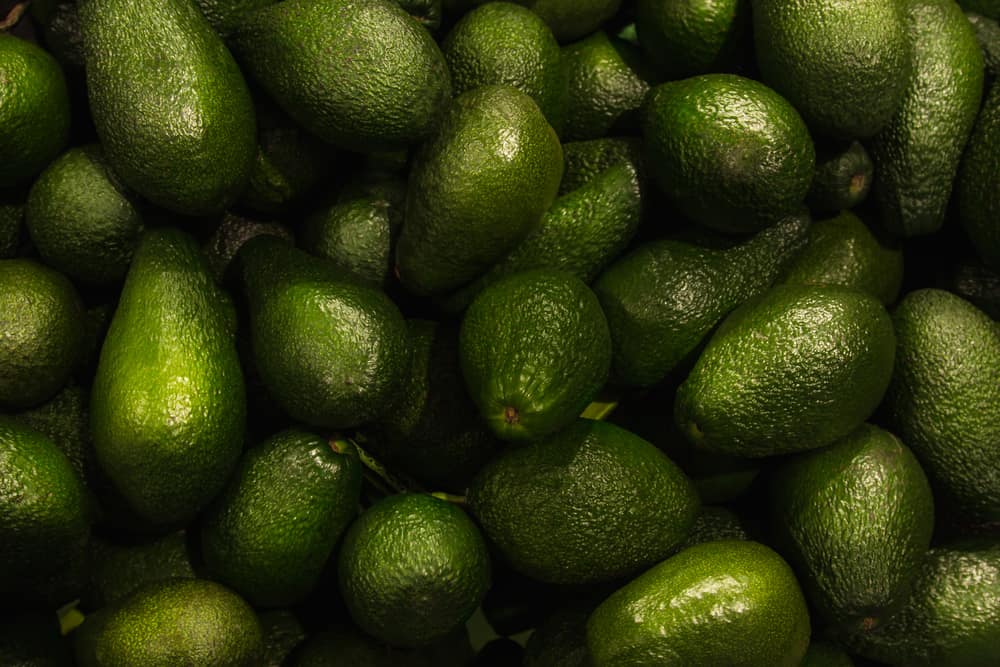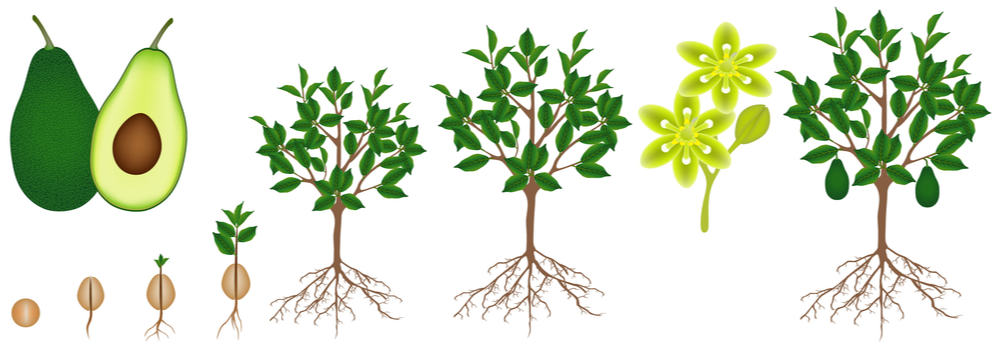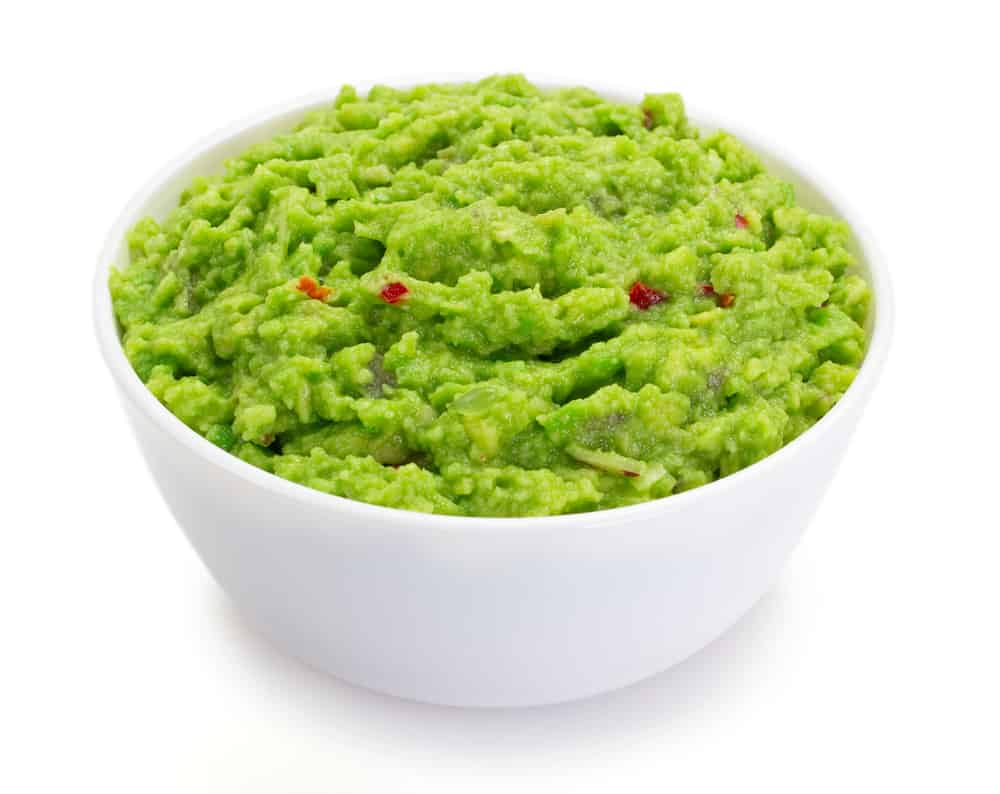Avocado is a popular delicious fruit that grows from a tropical evergreen tree, Persea Americana. Its origins are allegedly in Puebla, Mexico, and currently grow in several countries in South America, Central America, the Caribbean, and Southeast Asia. It is widely consumed in many parts of the world and has become a go-to ingredient in a variety of dishes. The pulp of this creamy edible is nutrient-dense, with up to 33% in oils that are very rich in monounsaturated fatty acids. It has a host of medicinal properties; hence, it is often tagged as a superfood.
This pear-shaped berry also goes by other names such as alligator pear and butter pear. The former is due to the skin. Avocado has a rough alligator-like appearance, while the latter is because of the buttery texture of its meat.
Avocado is part of the laurel flowering plant family or Lauraceae and is called several names around the globe. It is “palta” in Central America, “abacate in Portugal,” and “aguacate” in other Spanish-speaking locations. The term avocado itself is derived from “ahuacaquahuitl,” which means testicle in Nahuatl – an Aztec language. It may be due to the avocado’s shape. It is described as a kupa shell fruit containing a single large spherical pit in the middle.

Brief history
The existence of avocados can be traced back to 900 AD in Chan Chan, which once had a fertile river valley. It has since been an abandoned Peruvian city that fell to the Incas. The book, Suma de Geografía que Trata de Todas las Partidas y Provincias del Mundo by Martín Fernández de Enciso published in 1519, serves as an ancient written evidence of the avocado. He mentioned that an avocado he found in what is now known as Colombia had an orange color in the beginning which turned into yellow when it was ripe.
In 1696, an Irish naturalist Hans Sloane listed avocado among Jamaica’s catalog of plants and was believed to have been the first person who called it as such. It was introduced in Indonesia, Brazil, and later in the Levant region, South Africa, and Australia.

Introduction to the US market
The avocado came to the US in 1833 when a horticulturist, Henry S. Perrine, started planting it domestically in Florida. Many years later, it became a commercial crop, with its cultivation in Florida, California, and Hawaii. However, it didn’t catch on right away. Many consumers who were conservative became wary of the savory fruit when it earned its reputation of being an aphrodisiac. In addition, the health-conscious shied away from avocados, thinking they were fatty. Once more information came out about good fats and bad fats, there was no stopping the avocado from infiltrating the culinary world.
Today, around 79 percent of avocados in the US are imported from Mexico. In 2016, Americans consumed an estimated 140 million pounds of the one-seeded berry during Super Bowl Sunday alone. This fact is mainly because of guacamole, a popular avocado preparation, which continues to be the perfect snack companion while enjoying the biggest sporting event.
Avocados come in different varieties, but the Hass avocado is the most consumed cultivar around the world. Rudolph Hass discovered this particular variety in the early 1920s. It has a dark green color and rough skin. It is typically larger and weighs around 300 grams. This variety turns into a purple-back color and feels slightly tender when it is ripe.

Propagation and cultivation
Avocado trees thrive in a Mediterranean climate that is sub-tropical and humid. This condition is prevalent in tropical regions of South and Central America and is vital to flowering. Other countries that possess such growing conditions include Vietnam, Indonesia, Sri Lanka, Malaysia, the Philippines, South Africa, Spain, Australia, and New Zealand. Hence the majority of the fruit production in the US is in California, with 400 million pounds being harvested each year. Globally, it has increased to over 6 billion pounds.
The avocado trees bear fruit all year round; hence they don’t go dormant at any time. One mature avocado tree can produce up to 500 fruits yearly. It reaches up to 20 meters long with alternating leaves that are glossy and dark green.
Avocado standard dimensions
Tree length: up to 66 feet
Leaf length: 4.7 to 9.8 inches
Flower width: 5 to 10 millimeters
Fruit length: 7 to 20 centimeters
Fruit weight: 100 to 1,000 grams
Seed length: 2 to 2.5 inches
Gardeners can propagate avocados through seed planting, rooting of cuttings, layering, and grafting. However, propagating by seed will not produce a true-to-seed fruit. Using cuttings will do, but this will take at least seven years to establish and bear avocados. Instead, avocado farms propagate through grafting. It uses the scion or branch of the tree and grafts it onto a rootstock as an example. This method can be a complicated process that commercial growers usually perform, but it will yield a lot faster than starting from scratch.
Rootstocks could either be seedling rootstocks or clonal rootstocks. Seedling rootstocks are young plants that can be grafted after growing them in a greenhouse for a year. Clonal rootstocks are lab propagated plants that come with the advantage of bearing ideal plant characteristics. Either of these two is used for grafting avocados.
The frequency of irrigation is based on rainfall, weather, soil type, and avocado variety. This aspect is highly important to ensure survival and bolster fruit production. However, growers should not use saline water as it will negatively affect yield. As a rule of thumb, avocados should be irrigated around an inch of water every week.
Nutritional value
Avocados are packed with healthful benefits; hence, they are often associated with a quality diet based on their ability to provide the most important nutrients. They are excellent sources of vitamins C, E, K, B6 and minerals such as folate, riboflavin, folate, pantothenic acid, potassium, magnesium, lutein, beta carotene, iron, fiber, niacin, choline, and omega 3.
A single serving of avocado (about an ounce) has only 50 calories, 75 percent of which comes from its monounsaturated fat. It also provides 8 percent of the recommended daily consumption of dietary fiber, which is its best source among all fruits. This superfood even acts as a booster of nutrients when consumed alongside other nutritious foods.
Individuals suffering from high cholesterol levels may benefit from avocado intake. Based on a study involving hypercholesterolemia patients, there was a decrease of 22 percent in their bad cholesterol when they included avocado in their diet. At the same time, their good cholesterol levels have increased by 11 percent. On the other hand, randomized controlled trials on overweight subjects revealed that avocado consumption improved lipid profiles. They have also shown its great potential to control obesity because its inclusion in meals can satiate faster, effectively reducing hunger that otherwise compels people to eat more.
Safety in consumption
Because of their high moisture content and alkaline pH level, avocados are susceptible to bacterial growth. This incidence is aggravated because avocados are often eaten fresh. As such, food handling in restaurants may pose additional foodborne risks.
In several outbreak reports to the CDC, guacamole was one of the foods where pathogens like salmonella, e.coli, staph, listeria, etc., were found. Microbiological surveillance was also conducted by sampling domestic and imported avocados. They found a higher prevalence of listeria in avocado skins than in its pulp. As such, it is imperative to wash avocados thoroughly under running water before consumption and cooking. The sooner you eat them without the skin, the lesser the risk of illness.

Popular uses
Avocados are being included in a variety of cuisines now more than ever. Aside from guacamole which appears to be the most popular avocado preparation, this berry has found its way to all sorts of sushi, as a spread on toast, milkshakes, poached egg, burgers, baby food, among many others. The cool creaminess of the Hass avocado can complement many flavors, from salty to umami. It can also tone down the spiciness of other ingredients while adding its signature taste and texture.
In Mexico, avocado is commonly mixed with white rice. It is used as a mayonnaise alternative in Peru, pureed, and added to meats in Chile, served with milk in the Philippines, etc. On the other hand, avocados, particularly their oil, are also applied topically as a moisturizer. The pulp is used as a face mask and hair treatment because of its significant vitamin E and antioxidants.
